Sitio Semente– From Garden to Forest
Adapting agriculture to the local environment by mimicking natural processes is common to traditional agriculture communities around the world, yet it has only recently re-emerged in the Americas. After decades of land degradation and resource misuse, sustainable food systems are gaining popularity. Increasingly, a great emphasis is being placed on creating systems and practices that work in tandem with nature. One well-known practice is the ‘Three Sisters’ adopted from the Native Americans, in which corn, bean and squash are planted together. The three crops provide nutrients to one another, support each other structurally, retain moisture, and suppress weeds.
A farm called Sitio Semente in Central Brazil is taking regenerative agriculture to a whole new level. Two young farmers – Juã Pereira and Rômulo Araújo – have made great advances in terms of complexity and scale by practicing the model of successional agroforestry developed in Brazil by Swiss agroecologist and farmer Ernst Gotsch.
Agroforestry refers to systems that incorporate forestry and agriculture, usually with the intention of profiting – economically, environmentally and/or socially. Tree-planting can bring additional benefit to the ecosystem, including: shade provision for shade-tolerant crops, habitat creation for beneficial insects, protection from the elements, as well as production of other commercial products that can be derived from trees. (You can read more here.) Some researchers consider agroforestry a component of agroecology, which you can be read more about on RTE’s blog Agroecology: An Interdisciplinary Approach to Sustainable Agriculture.
Juã and Rômulo are using an innovative form of successional agroforestry, which utilizes the natural growth and development sequence of plant communities to guide them in planning plantings and harvests. As an example, they plant lettuce, broccoli, and manihots in succession on the farm, timed in such a way that the next crop is already growing while the previous one is being harvested. Above, the banana and eucalyptus trees form the canopy layer, actively contributing organic material to the lower layers while offering shade for more shade-tolerant crops. Given the notorious reputation that eucalyptus has earned among some environmentalists, it is surprising that Gotsch uses this species to great advantage in this agroforestry model.
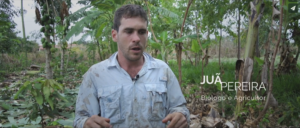 The two young farmers studied with Gotsch and draw inspiration from his work. Gotsch studies complex crop systems, focusing on how plants interact to produce mutually beneficial results. In 1979, he developed an agroforestry model with the goal of “synchronizing agricultural processes with natural [processes].” This came to be known as syntropic agriculture. The tenet of Gotsch’s work is “instead of exploring resources, let’s increase [resources].” Three years later he moved to Bahia, Brazil to establish an agroforestry project. After years there, his work culminated not only in further understanding how complex crop systems work in Brazil, but also restored extensive areas (410 hectares!) of Atlantic rainforest.
The two young farmers studied with Gotsch and draw inspiration from his work. Gotsch studies complex crop systems, focusing on how plants interact to produce mutually beneficial results. In 1979, he developed an agroforestry model with the goal of “synchronizing agricultural processes with natural [processes].” This came to be known as syntropic agriculture. The tenet of Gotsch’s work is “instead of exploring resources, let’s increase [resources].” Three years later he moved to Bahia, Brazil to establish an agroforestry project. After years there, his work culminated not only in further understanding how complex crop systems work in Brazil, but also restored extensive areas (410 hectares!) of Atlantic rainforest.
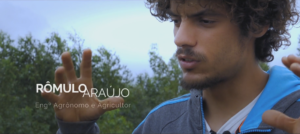 Today in Brazil, Juã and Rômulo continue experimenting and innovating on their farm using the same principles. What they appreciate about this model is the level of creative freedom farmers possess with regard to choosing crop species, thus enabling them to create highly diversified farms. When interviewed, they recall starting out with an unused, overgrown field with depleted soils.
Today in Brazil, Juã and Rômulo continue experimenting and innovating on their farm using the same principles. What they appreciate about this model is the level of creative freedom farmers possess with regard to choosing crop species, thus enabling them to create highly diversified farms. When interviewed, they recall starting out with an unused, overgrown field with depleted soils.
One of the first steps of returning nutrients back into the soil was through the application of rock dust. In conventional agriculture, when crops are harvested the soils are depleted and require the addition of fertilizers. In this system, only one initial application of rock dust is required, with no external inputs required thereafter. In consecutive years, the crops and organic matter continue to enhance the quality of the soils.
The benefits of agroforestry are many, these include but are not limited to: food production, improved soils with higher water retention capacity, constant recycling of nutrients from fallen canopy matter, and regulation of the microclimate. In general, agroforestry also removes farmer dependency on external fertilizers, allowing them more control over food production. Specific to Gotsch’s system, the farm is self-regenerating as the nutrients are recycled. The key is to frequently prune the tree branches. Other benefits derived from
constant pruning are: increased root activity that strengthens the symbiotic relationship(s) between plant and microorganisms, increased photosynthetic activities that lead to higher carbon sequestration and increased gibberellic acid – a type of plant hormone – production which promotes plant growth. Aside from frequent pruning, other practices of Gotsch’s agroforestry model include diversifying the stratas of the forest, selecting for vegetation that fits within the natural succession scheme and careful spacing and timing of crop growth.
The success of Juã and Rômulo’s farm can be seen from the video produced by Agenda Gotsch, Da horta à floresta – From garden to forest. Credit for the video and the Agenda Gotsch website goes to the two producers, Dayana Andrade and Felipe Pasini, two journalists with extensive experience in the video production arena. In the video, the two young farmers enthusiastically share their results with the rest of the community, and envision a future where sustainable agriculture will be the norm.
Researcher and Professor Suzi Huff Theodoro introduced RTE’s executive director Joanna Campe to Sitio Semente while she was in Brazil. Through the years Joanna has been greatly inspired by her visits to the farm.
As a part of its mission, RTE is advocating for this agroforestry model in semi-tropical and tropical regions worldwide. This model can be easily adapted to a region’s culture and habitat with its great potential for growing a diversity of crops, from fruits and vegetables to nuts, coffee, cacao, and other tree-based crops.
Juã’s has also been influenced by Professor Suzi Huff Theodoro, with whom he studied forestry at the University of Brasilia (Read our articles about remineralization in rural Brazil and remineralization in the northeast communities of Brazil). Juã is making a living out of selling his crops directly to the local farmer’s market in Brasilia, and he has a contract to sell produce directly to the Brazilian government. RTE plans to foster partnerships and promote workshops that take place at Sitio Semente. Remineralization is an important component of this model and we plan to promote it in other countries such as Cuba, where there are local sources of rock dust and remineralization will increase the soil quality, productivity and nutritional levels.
Agroforestry has been shown to benefit the environment and community more than conventional agriculture. Sitio Semente is an exemplary case of the benefits that agroforestry can bring to farmers and offers a sustainable model for other crop-growers in the semi-tropical and tropical regions. The benefits don’t have to stop there. In the long run, agroforestry may serve much larger roles in mitigating climate change through carbon sequestration. The potentials are many, and it is up to farmers like Juã and Rômulo to help lead the charge in transitioning towards agroforestry.
Zu Dienle Tan recently graduated from the University of Michigan with a Master’s degree in natural resources and environment. She specializes in conservation ecology and is passionate about biodiversity conservation, agroecosystems and sustainable development.
Support us on Patreon
Thank you for joining us today! Please become a member of RTE and support us on Patreon. Unlike many larger organizations, we work with a team of determined and passionate volunteers to get our message out. We aim to continue to increase the awareness of remineralization to initiate projects across the globe that remineralize soils, grow nutrient dense food, regenerate our forests’ and stabilize the climate – with your help! If you can, please support us on a monthly basis from just $2, rest assured that you are making a big impact every single month in support of our mission. Thank you!

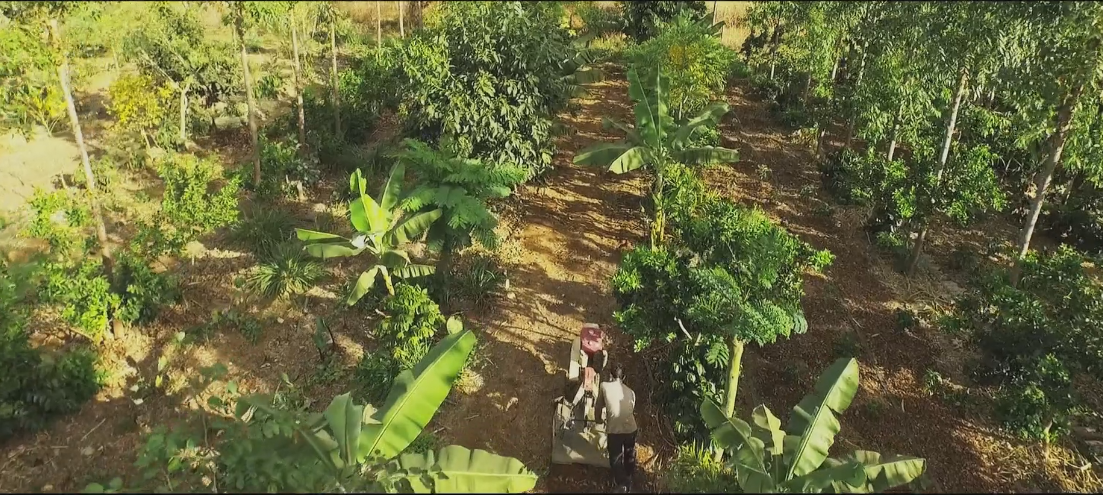
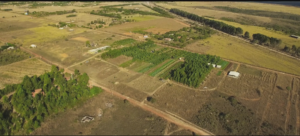
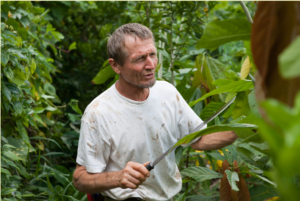
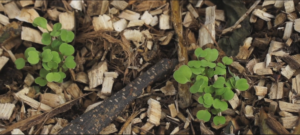
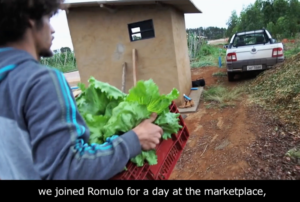
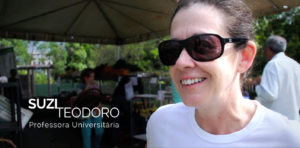
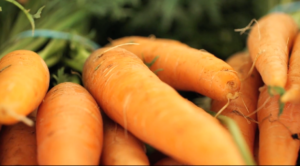
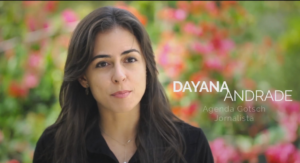
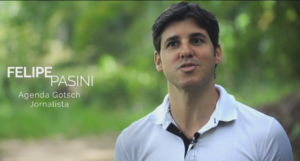






Jan Golden
August 15, 2017 (1:27 pm)
Thanks for this. We will add you to our list of useful addresses.